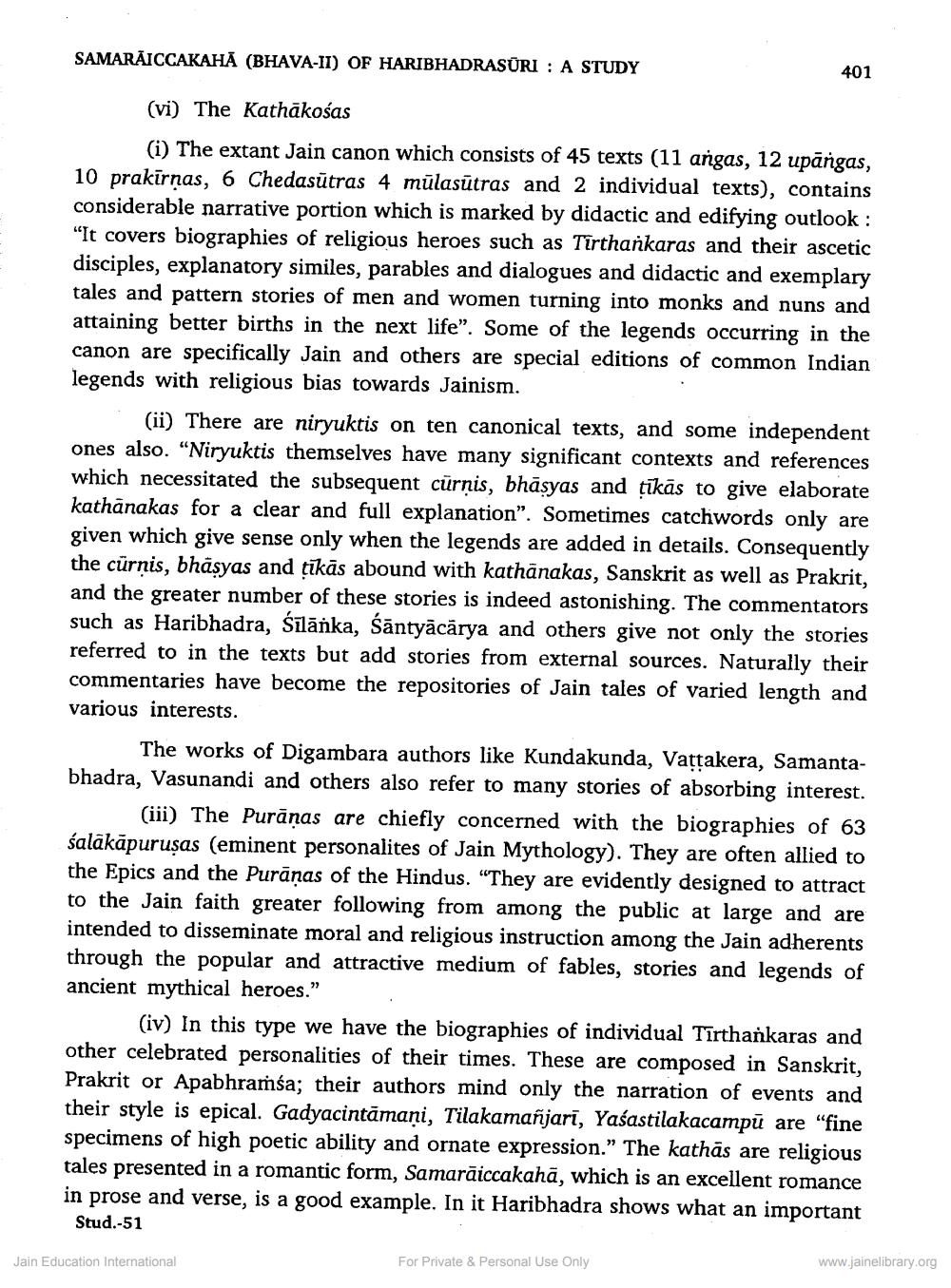________________ SAMARAICCAKAHA (BHAVA-II) OF HARIBHADRASURI : A STUDY 401 (vi) The Kathakosas (i) The extant Jain canon which consists of 45 texts (11 angas, 12 upargas, 10 prakirnas, 6 Chedasutras 4 mulasutras and 2 individual texts), contains considerable narrative portion which is marked by didactic and edifying outlook : "It covers biographies of religious heroes such as Tirthankaras and their ascetic disciples, explanatory similes, parables and dialogues and didactic and exemplary tales and pattern stories of men and women turning into monks and nuns and attaining better births in the next life". Some of the legends occurring in the canon are specifically Jain and others are special editions of common Indian legends with religious bias towards Jainism. (ii) There are niryuktis on ten canonical texts, and some independent ones also. "Niryuktis themselves have many significant contexts and references which necessitated the subsequent curnis, bhasyas and tikas to give elaborate kathanakas for a clear and full explanation". Sometimes catchwords only are given which give sense only when the legends are added in details. Consequently the curnis, bhasyas and tikas abound with kathanakas, Sanskrit as well as Prakrit, and the greater number of these stories is indeed astonishing. The commentators such as Haribhadra, Silanka, santyacarya and others give not only the stories referred to in the texts but add stories from external sources. Naturally their commentaries have become the repositories of Jain tales of varied length and various interests. The works of Digambara authors like Kundakunda, Vattakera, Samantabhadra, Vasunandi and others also refer to many stories of absorbing interest. (iii) The Puranas are chiefly concerned with the biographies of 63 salakapurusas (eminent personalites of Jain Mythology). They are often allied to the Epics and the Puranas of the Hindus. "They are evidently designed to attract to the Jain faith greater following from among the public at large and are intended to disseminate moral and religious instruction among the Jain adherents through the popular and attractive medium of fables, stories and legends of ancient mythical heroes." (iv) In this type we have the biographies of individual Tirthankaras and other celebrated personalities of their times. These are composed in Sanskrit, Prakrit or Apabhramsa; their authors mind only the narration of events and their style is epical. Gadyacintamani, Tilakamanjari, Yasastilakacampu are "fine specimens of high poetic ability and ornate expression." The kathas are religious tales presented in a romantic form, Samaraiccakaha, which is an excellent romance in prose and verse, is a good example. In it Haribhadra shows what an important Stud.-51 For Private & Personal Use Only www.jainelibrary.org Jain Education International




